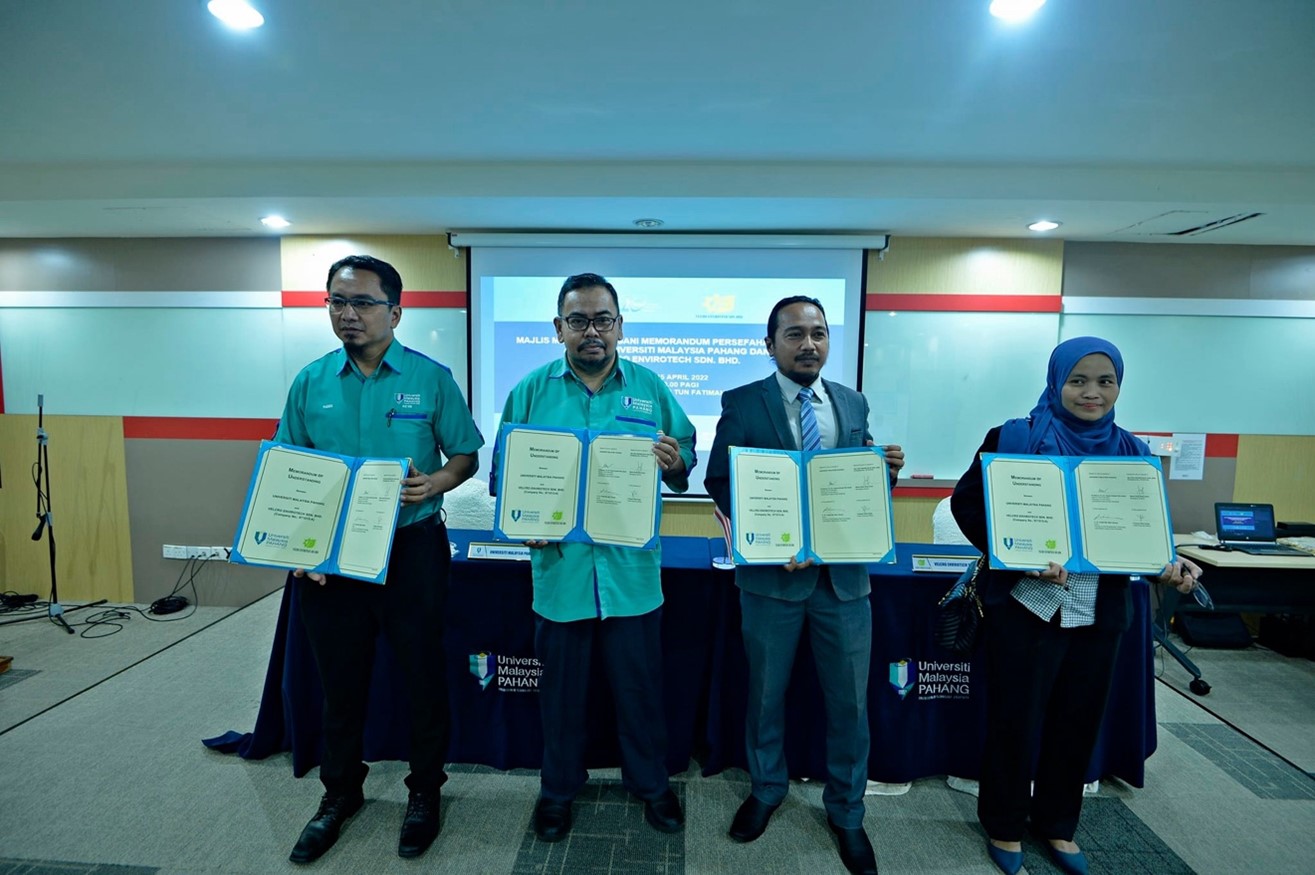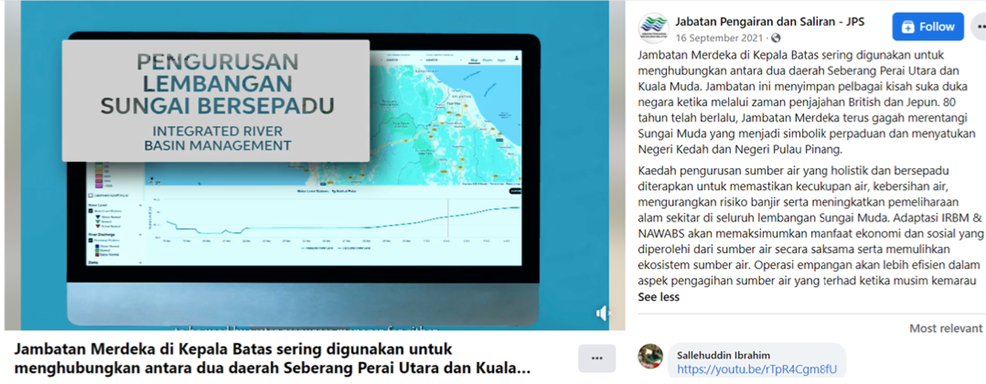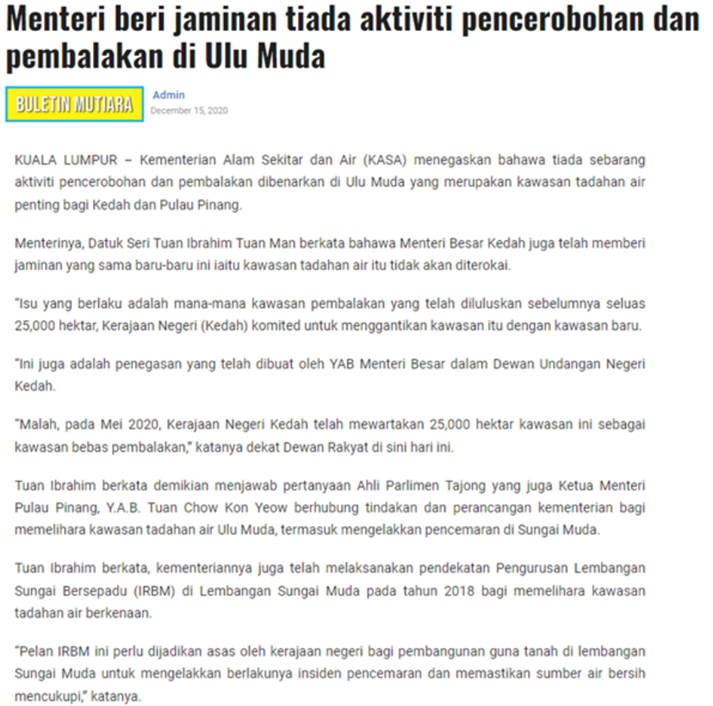UMPSA Support water conservation off campus
UMPSA has established a collaboration with IWK

Universiti Malaysia Pahang Al-Sultan Abdullah (UMPSA) and Indah Water Konsortium Sdn. Bhd. (IWK) have entered into a collaboration focused on domestic and industrial wastewater treatment technology. This partnership will involve sharing expertise for research and development in wastewater processing, aiming to improve treatment efficiency and support environmental sustainability. UMPSA will enhance professional development for IWK staff through its Industrial Postgraduate Program, while IWK will provide academic attachment programs for UMPSA staff and industrial training for its students. Overall, this collaboration seeks to strengthen skills and knowledge in wastewater management, benefiting both organizations.
Enhancement Of Sewage Treatment System Via Phytoremediation Technology Project lead by Dr Suryati Binti Sulaiman from Faculty of Civil Engineering Technology, UMPSA. Phytoremediation among the available process is a new method in which plants are used for the cleaning of water pollution because plants have high interaction with water bodies, media, and microorganisms; furthermore, plants have a positive role in the removal of contaminants from water.
UMPSA’s responsible to:
- Fabrication of integrated constructed treatment system (ICTS at the Sewerage Treatment Plant located at Rawang Selangor (GBK01).
- Plant cultivation and acclimatization.
- Monitoring the performance of ICTS; and
- Exploring the potential use of harvested aquatic plants
- Provide research material and basic infrastructure (instrument and laboratory equipment) for the project.
IWK responsibilities
- Providing facilities for conducting the project
- Monitoring the performance ICTS; and
- Providing adequate information and documents in the possession of IWK defining IWK’s requirements for the project.
Smart Iot And Geospatial Approach For Water Quality Monitoring System: Case Study In Galing River, Kuantan

Frequent flash flood in Pahang is one of the main reasons of severe water pollution in Kuantan city, Pahang, Malaysia, especially Galing River as the main stream network. Unfavourable surrounding factors such as distance to industrial park, high population and poor sewerage system are the main factors that contribute to severe impact of water pollutants on clean water sustainability in Kuantan. The existing conventional monitoring is vulnerable to time delay and data inaccuracy. Aligned with Industrial Revolution (IR) 4.0, geo-artificial intelligent (geo-AI) technology is crucial to be implemented in local stream network for the water sustainability in long term effect.
The project focuses on developing an IoT-based monitoring system integrated with geospatial analysis tools to monitor water quality in Galing River, which is vulnerable to water pollution. The system will use IoT devices, GIS tools, and AI-driven hydrological frameworks to analyze water parameters and pollution. Key methods include using Inverse Distance Weighted (IDW) for spatial interpolation, drone images for land use and climate analysis, and hydrological analysis for pollution detection and treatment needs. The study aims to prove that water quality can be efficiently monitored through IoT and GIS integration and that this system will enhance real-time water quality monitoring and decision-making. The project aligns with SDG 6, focused on clean water and sanitation, and aims to provide real-time data for improved water security and environmental sustainability, benefiting local communities, health facilities, eco-tourism, and authorities like water agencies and planners.
This project lead by GS. Dr. Syarifuddin Bin Misbari from Faculty of Civil Engineering Technology.
IRBM – Water Quality of the Sg Muda
The main objective of the Integrated River Basin Management (IRBM) or Pengurusan Lembangan Sungai Bersepadu (PLSB) is to establish a balance between the existing natural functions of the river system and the developed aspects of the system. IRBM is not a technical solution. Rather, it is an approach to water resources management that takes into account all factors linked to land and water resources, including social and economic activities. Under Water Quality subchapter in IRBM study, existing water quality status of the river system within the Sg Muda Basin was analyzed, pointed out all potential contributor in polluting the river system either point source or non-point source as well as the establishment of the river waste assimilative capacity for pollution by TMDL.
The IRBM study was conducted in May 2018 – April 2019. However, the on-field development and implementation by the Department of Irrigation and Drainage (Jabatan Pengairan dan Saliran) is ongoing till now.
Process Name: Water Quality status, river waste assimilative capacity of Sg Muda, TMDL
Description:
- The upper stream of Sg Muda is considered ‘Clean’ and registered NWQS Class II during both flows. However, Sg Muda is facing water quality degradation during low flow condition at the middle stream towards the downstream of the river. Sg Jerong as one of its tributaries located at the middle stream breached the NWQS Class II and was within Class III. At the downstream, severe degradation registering NWQS Class IV was observed during both flows condition.
- Waste Assimilative Capacity (WAC) is the ability of the river to accept modest amounts of biodegradable waste. Any stream can assimilate a certain amount of waste and still maintain a level of dissolved oxygen (DO) that high enough to support a healthy population of fish and other aquatic organisms. However, if the assimilative capacity is exceeded, the concentration of DO will decrease below the level required to protect organism in that particular stream. Meanwhile TMDL (Total Maximum Daily Load) is the total amount of pollution load (kg/day) that the stream can sustain.
To worsen the present water quality:
TMDL>WAC
To attain the present stream water quality:
TMDL = WAC
To improve the stream water quality to the desired standards:
TMDL < WAC
Sg Muda mainstream is facing excess loading that exceeded the Sg Muda waste assimilative capacity of parameters such as BOD, NH 3 -N, P and Iron (Fe). It is pertinent to highlight in this study that all tributaries are having excess loading of BOD that exceeded the waste assimilative capacity of the rivers and more than 80% of the tributaries are also exceeding the waste assimilative capacity for other parameters simulated.



